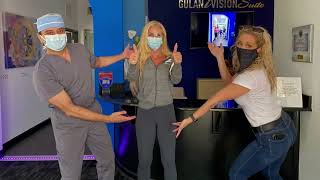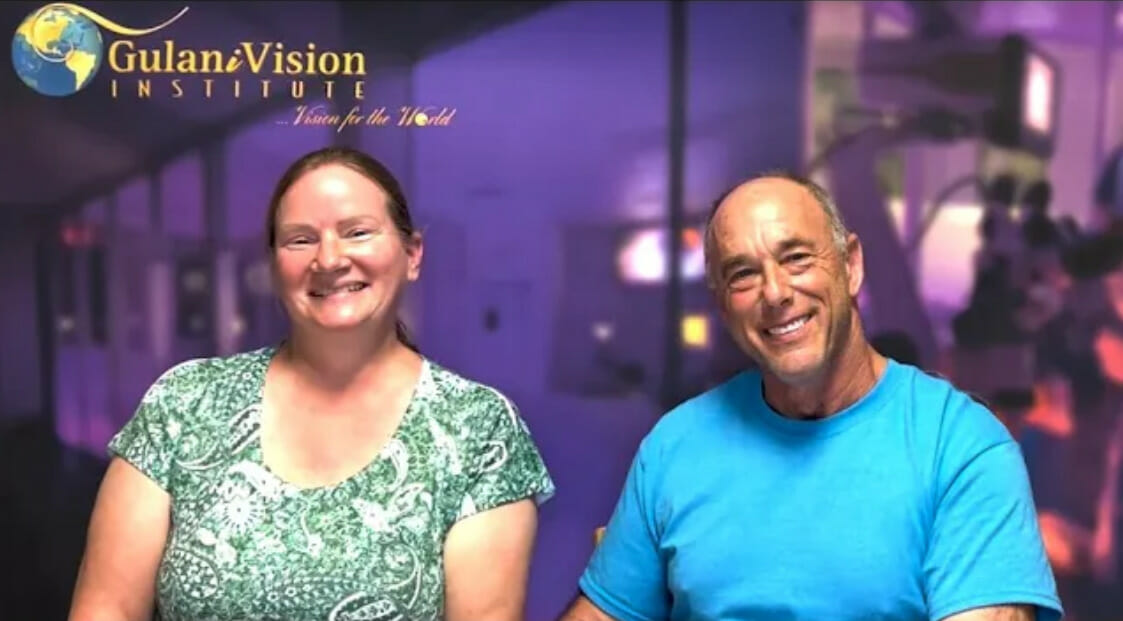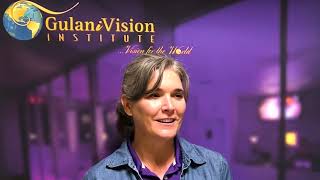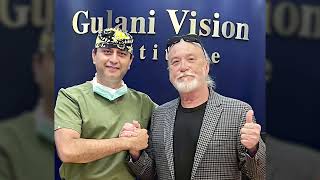LenzOplastique®
LenzOplastique® (the “O” stands for “Optimized Vision”):
“It’s your Brain that sees; Eye surgery is my avenue to align your Optics and maximize its Vision potential” – Gulani, AC
“Plastique™” level of surgery is what Dr. Gulani performs, having innovated and honed over three decades with his proprietary protocols, award-winning surgical instruments, and technological prowess, therefore raising surgery itself to an ART and accountable pursuit for custom-tailored vision irrespective of each patient’s unique situation or complexities, therefore eradicating the word “Routine” surgery from the dictionary of surgeons globally.
Raising Cataract and Refractive Lens Exchange (RLE) Surgery to an ART, Dr. Gulani’s relentless pursuit to design vision and lend artistry, raises surgery itself to his proprietary LenzOplastique® where he personally studies all the in-depth vision measurements/parameters of each patient using Advanced Diagnostic technologies to understand all factors including anatomy, physiology, optics, and vision potential to then diligently apply his vast array of lens based surgical technologies and techniques along with his “Vision A La Carte” concept to customize surgery in a holistic approach, individually tailored to each eye no matter how simple or complex it is and also in combination surgical concepts. This truly then is individually custom-designed Lens based surgery to address the optics, anatomy and physiology of each eye while optimizing for best vision potential.
Therefore, after studying your eye’s anatomy, physiology, optics and visual capacity along with associated anatomical anomalies in synch with your neural (Brain) potential, becomes Dr. Gulani’s goal.

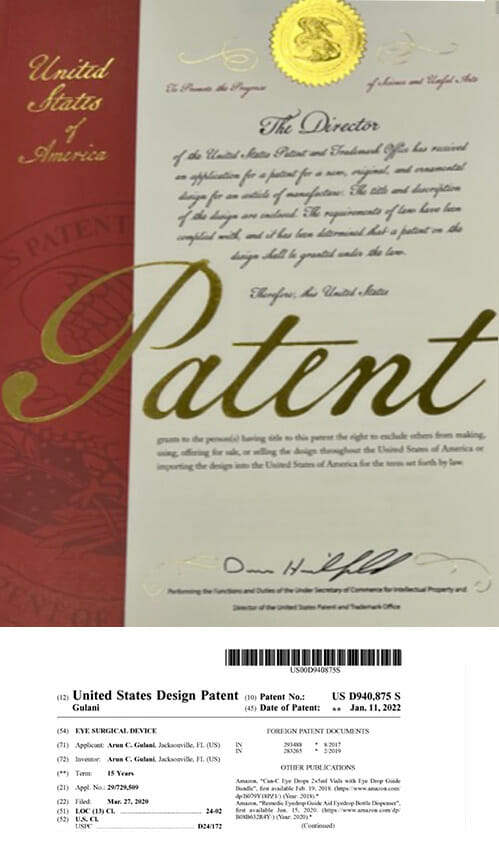
LenzOplastique® therefore is a Lens based (for dysfunctional lens syndrome, cataracts, surgical complication of lens implants, etc.) surgery that Dr. Gulani has pioneered not only to artistically remove the aging/damaged natural lens from the eye, but also to compensate for anatomical abnormalities including those of the cornea and anterior chamber by indirectly cancelling their adverse impact using optical manipulation with advanced Lens implants and cutting-edge technological applications, to enhance each patient’s potential and maximize their full visual capacity in the brain (eyes are data collecting organs, it’s the brain that processes and provides final vision).
Thus, using his Plastique® principles, Dr. Gulani has raised surgery to a visual art by correcting vision errors caused by single or multiple dysfunctional anatomy (natural or post-surgical) with a least interventional approach while also correcting associated pathologies (anatomical and optical) and irregularities of low to higher order aberrations with vision disturbances.
With this desire, Dr. Gulani has innovated award-winning surgical instruments, protocols, including having pioneered the world’s first LenzOplastique® surgical SPA, raising the process of surgery to an Experience!
Dr. Gulani’s CLOUDY (Crystalline Lens Opacification Underway) concept:
As we age, our eyes undergo visual changes to result in poor vision, both, in quality and quantity. Think of our natural crystalline lens as being jelly-soft and clear as a diamond. Over time, it gets cloudy and hard. This stage is still not defined as cataract until it is of a certain level of opacity and blindness quotient impacting the patient’s lifestyle adversely.
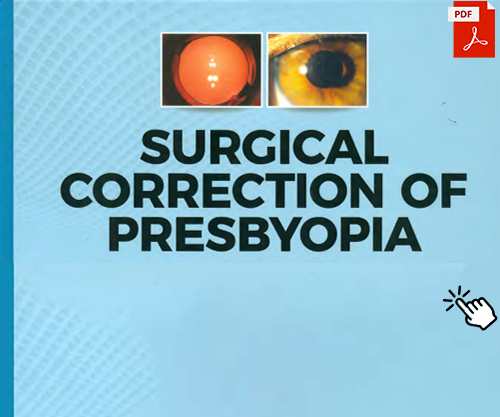
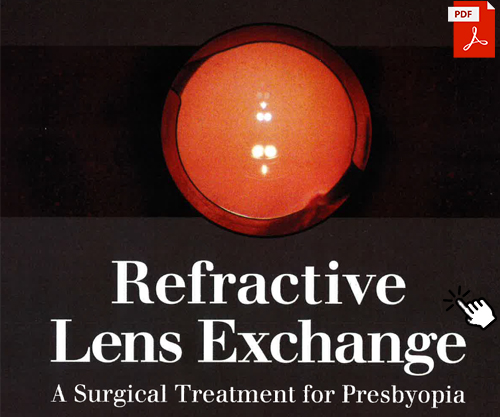
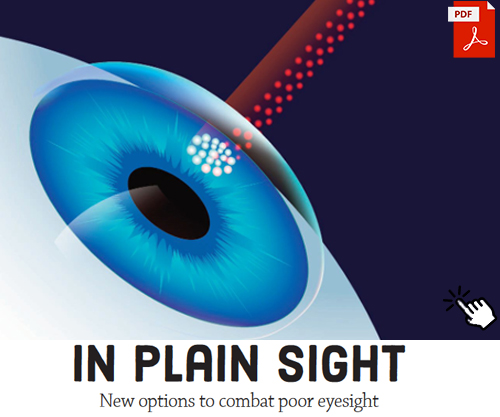
Defined as Dysfunctional Lens Syndrome (DLS), this is the stage of life when people in their prime of personal and professional life experience diminished visual quality, difficulty driving at night and reading menus in dim lit restaurants.
Additionally, by the time this occurs we are surely over 40 years of age and that is when our lens also stops zooming in the eye (that is why people zoom with their hands and hold things far to read clearly). This condition is called Presbyopia (that age and stage when you need reading glasses).
Now, if you put these two problems together, you have a combination of pre-existing glasses/contact lens powers (like nearsighted, farsighted, astigmatism) and presbyopia in addition to a somewhat cloudy natural lens.
Note, this natural lens if cloudier for any reason, is defined as a CATARACT.
How is LenzOplastique® Different from Cataract Surgery?

Most Cataract surgeons (eye surgeons trained to remove Cataracts and Dysfunctional lens) are not Refractive surgeons (eye surgeons trained to correct vision errors like Nearsightedness, Farsightedness, Astigmatism and even Reading vision). Dr. Gulani is uniquely experienced in both Cataract & Refractive surgery and additionally, is skilled beyond most Cataract and Refractive surgeons in being a Pioneer, Innovator and Master surgeon who teaches his skill level to other eye surgeons worldwide.
Armed with this dual level of skill and experience, he dedicatedly measures and personally studies all vision criteria and picks abnormalities special to each individual eye using cutting-edge diagnostic technologies while also measuring the associated anatomy, physiology, optics, and vision potential to then diligently apply his vast array of proprietary surgical technologies and techniques (KLEAR™; Full Spectrum Kerato-Lenticulo-Refractive range of surgeries) using his personally derived surgery algorithms (GPS™; Gulani Planning Systems) along with his “Vision A La Carte” concept to customize surgery in a holistic approach, individually tailored to each eye no matter how simple or complex it is.
Therefore, going far beyond the measurements of most cataract and refractive surgeons, he studies each eye’s anatomy, physiology, optics and visual capacity in sync with your neural (Brain) potential, which then becomes his goal. This goal in addition, also looks to cancel abnormalities of associated structures and eye problems through that one and least interventional surgical approach that he shall uniquely tailor to your eye.
As an analogy, think you have a broken nose, and your surgeon puts that nose back together (mends it). That is surgery! But what if that surgeon not only puts that broken nose together, but also makes it even more attractive than what you were born with? Now take that to the next level; what if that surgeon not only makes it more attractive than what you were born with, but also designs it in shape and function in such a way that it even compensates for your deformed cheeks and ears and therefore, collectively (without operating on the deformed cheeks or ears) makes the entire face so much more symmetric and beautiful while also performing its function of smell at the highest level that nose is capable of?, that is the “Plastique™” state of mind that Dr. Gulani teaches eye surgeons while raising the bar on surgery to Artistry!
This is the attitude & mindset along with his technological applications and surgical skills which allow him to perform lens-based surgery (LenzOplastique®) at a level which most eyes surgeons are in awe of as he addresses all levels of complex Cataracts along with their associated anomalies and refractive errors using a full spectrum of Premium lens implants, even though Abnormal corneas, Irregular corneas, Fuchs Dystrophy, Scarred corneas, Keratoconus, Radial Keratotomy, Lasik complications, Narrow angles etc.
Dr.Gulani is always among the first in the world with his international privileges and has access to a wider spectrum of new generation lens implant (IOL) technologies without decision wavering by industry marketing or incentives of any kind.
While most surgeons may offer 3 or 4 Lens implant options, Dr. Gulani has access to a wide variety of lens implants among nearly 30 that are FDA approved in the USA and nearly 70 worldwide.
Now raise this application further in that Dr.Gulani performs this level of surgery (LenzOplastique®) in a SPA like ambience with no pain, no injections and no stitches in most cases right here in our institute (Trademarked Vision Surgery Suite) with no need to go to hospitals or crowded surgery centers.
Thus, (LenzOplastique®) is a uniquely custom-designed, lens-based surgery with a long-term view to address not only physical removal of the cataract or dysfunctional lens but also aiming to correct associated problems and vision refractive errors giving each patient their best shot for vision while also normalizing their eye anatomy and future function.
Vision Suite® Surgery SPA

We have been awarded The US Patent and Trademark Office (USPTO) registered trademark for this Innovative and Futuristic surgical facility as First in the World, fully equipped with State-of-The-Art Surgical Technologies and Safety standards as certified by the State of Florida.
Vision Suite® (SPA)
Our Vision Suite services offer patients an experience “Like no where else on Earth!” (as remarked by patient, Scott H) – through our innovative and futuristic surgical facility, fully equipped with state-of-the-art surgical technologies and safety standards. Patients receiving our Vision Suite services will welcome the ambience and soothing atmosphere of this high tech, high touch surgical suite with personalized, non-rushed, one on one attention. Our Vision Suite services have been universally described by patients worldwide as having a spa-like experience.
The ambience and soothing atmosphere of this High Tech; High Touch, eye surgical suite with a personalized, non-rushed, One on One attention to each patient has been universally described by worldwide patients as having had an experience like a SPA.
How is LenzOplastique® Different from Refractive Lens Exchange Surgery?

Refractive lens exchange (RLE), also called lens replacement surgery or Clear lens extraction (CLE), is an elective refractive surgery procedure in which the natural crystalline lens of the eye is removed and replaced permanently with an artificial lens implant to correct the refractive error (Nearsightedness, Farsightedness and or Astigmatism) along with Presbyopia (reading glasses) improvement. RLE surgery is like cataract surgery; however, in RLE, the procedure is performed primarily to change the refractive properties of the eye rather than to remove an advanced cataract that has developed in the lens of the eye.
How Dr. Gulani decides on what surgery to perform is by holistically looking at all refractive errors, level of lens cloudiness, presbyopia and age along with corneal statistics to make a decision between 20 different Laser Vision techniques (like LASIK) and a more permanent and long term surgery (though more interventional) like LenzOplastique® with a full spectrum of new generation lens implant technologies.
Our Laser Vision techniques are done with permanence in mind, but this LenzOplastique® surgery is more so permanent because we are removing the only age-related changing optical element here (our natural lens). Think of this as never needing a Cataract surgery in the future.
How Does LenzOplastique® Work?

In hyperopic (farsighted) or myopic (nearsighted) patients, the light coming into the eye is not focused properly on the retina. This poor focus may be due to the eye’s crystalline lens either being too weak or too strong to help focus light appropriately. By removing the eye’s crystalline lens and replacing it with an artificial lens, the light can focus better on the retina and therefore reduces the person’s dependence on glasses and contact lenses. The artificial lens that is placed in the eye, called an intraocular lens (IOL), can be chosen depending on the refractive needs of the patient’s eye.
The procedure for LenzOplastique® is therefore similar anatomically though refractively and functionally more demanding than RLE or Cataract surgery. In RLE, the natural lens being replaced is clear or slightly cloudy, rather than a cloudy and visually disabling lens (cataract). As in cataract surgery, many types of IOLs are available to replace your natural lens, depending on your anatomy, physiology, optical status and health of your eyes.
Dr. Gulani is always among the first in the world with his international
Dr.Gulani is always among the first in the world with his international privileges and has access to a wider spectrum of new generation lens implant (IOL) technologies without decision wavering by industry marketing or incentives of any kind.
While most surgeons may offer 3 or 4 options, Dr. Gulani has access to a wide variety of lens implants among nearly 30 that are FDA approved in the USA and nearly 70 worldwide.
Rather than confuse or hype patients with lens implant technologies, Dr. Gulani focuses on each patient’s individual visual capacity, anatomical associations and the brain’s ability in each patient to fuse binocular vision for maximal freedom at most distances.
Some examples of lens implants are:

- Monofocal IOL
- Toric IOL
- Trifocal IOL
- Multifocal IOLs
- Accommodating IOLs
- Pseudo-Accommodative
- Adjustable IOLs
- PiggyBack IOL
- Phakic Implants
- Additionally, he has access to more than one optical platform in a single lens implant ie. Toric Monofocal, Toric Multifocal, Toric Trifocal, etc.
Dr. Gulani has been involved with different lens implant technologies for over three decades having interacted with the very pioneers of these inventions which continue to evolve into present and future lens implant concepts.
Since with intraocular lenses, there is no “one size fits all, ”your eye surgeon should recommend an IOL that is most suitable for your individual needs.
What is the difference between LenzOplastique® and LASIK?

They are totally different techniques and on different parts of the eye. While LASIK remains the most popular option for correcting myopia, astigmatism and hyperopia, if you have a very severe refractive error or an abnormal cornea, lens-based refractive surgery such as LenzOplastique® or Phakic IOL (Visian ® ICL) implantation may be a better alternative.
Unlike LASIK or PRK, LenzOplastique® can correct high degrees of hyperopia, and visual acuity after LenzOplastique® surgery often can be better than LASIK and PRK outcomes in cases of moderate and high hyperopia.
If you have myopia, LenzOplastique® usually is performed only if you are not a suitable candidate for any other vision correction surgery and have an unclear natural lens. People with myopia have a higher risk of retinal detachment and hence other refractive surgery including phakic implants options should be explored first and either way, retinal status must be confirmed to be normal.
Who are candidates for LenzOplastique®?
LenzOplastique® is most used for middle aged and older patients that have refractive errors especially farsighted errors beyond the spectrum of LASIK/ PRK/ LaZrPlastique and nearly 20 different cornea-based Laser Vision techniques. These individuals are typically also presbyopic (reading glasses). Myopic and astigmatism patients can also avail of these under specific circumstances where the natural lens is cloudy.
Additionally, some patients may have a mild degree of cataract; the cataract may not be causing symptoms currently but will probably progress and cause vision problems in the future. In these patients, exchanging the natural crystalline lens of the eye for an artificial lens may help correct both the farsightedness, astigmatism and the presbyopia symptoms with no need for cataract surgery in the future.
In general, candidates for LenzOplastique® should be:
- 40 years of age or older: Younger people may still have eyes that are growing.
- Want to decrease dependence on glasses or contact lenses.
- Have had no change in glasses or contact lens prescription for at least a year.
- Have otherwise healthy eyes.
- Be willing to accept the relative risk associated with surgery.
- Understand that glasses and/or contacts may still be needed for some activities after surgery.
If you feel you have any condition that may prevent you from undergoing LenzOplastique® or other refractive surgeries, you should alert your eye surgeon so that he can help you make the best choice about undergoing refractive surgery.
LenzOplastique®: The Procedure
LenzOplastique® surgery usually takes about 15-20 minutes and is performed on an outpatient basis. Each eye is done separately, usually about a week apart. Numbing anesthetic drops are used during LenzOplastique® for your comfort
At Gulani Vision Institute, LenzOplastique® is performed in our “State of the Art” VisionSuite in a SPA like atmosphere where you are welcomed without any rush and individually attended to so Dr.Gulani can personally apply his custom designed plan for your eye.
Most of our patients fly back home the next day after their postoperative visit and commit to resting but if you are local, do plan to rest for two days.
Final outcomes of LenzOplastique® can take up to several weeks based on your unique complexities, and you may notice vision disturbances such as blurry vision, halos and glare, or a “scratchy” sensation as your eyes heal. You should be able to return to work and resume driving within a week of surgery, dependent on your eye surgeon’s instructions specific to each patent and their situation which shall be relayed to you by our competent and compassionate staff.
Normally, you won’t feel an IOL in your eye, in the same way that you don’t feel a dental filling for a cavity. The artificial intraocular lens is a permanent replacement for your natural lens and is designed to last the rest of your life.
Technique

“No Needles”, “No Patch” & “No Stitch” LenzOplastique® Surgery
Dr. Gulani performs LenzOplastique® surgery as an outpatient procedure with no needles or shots, no stitches, no patch, and no hospital stay.
Every step has been planned out from how he seats himself for your surgery to what direction he will approach your eye from (sometimes, we have seen him sitting uncomfortably to help patients who have very complex eyes and rarely we have even see him stand and operate).
The eye is numbed with drops to ensure comfort throughout the procedure. He uses sophisticated, computer programmed technology along with his invented Diamond instruments to customize the safe and accurate removal of your natural lens.
Its removal requires replacement with an artificial intra ocular lens implant (IOL) which is inserted through the microincision into the capsular bag of the natural lens for support. Once inside the eye, the lens spontaneously unfolds as it is placed into permanent position. No sutures are required because the small incision that Dr. Gulani designed is self-sealing.
Gulani Custom LenzOplastique® surgery with Lens implantation usually takes about 15-20 minutes and is performed on an outpatient basis in our proprietary US PTO Trademarked, Vision Surgical SPA. Each eye is done separately, usually about a week apart. Numbing anesthetic drops are used for your comfort during surgery.
Technology
Computer Programmed, Laser focused & Diamond specific

With a wide array of technology right from Advanced 3-D diagnostics including Scheimpflug , Infrared, Optical Path Difference, Ray Tracing, Optical Coherent Tomography and Ultrasound, to intra-surgical, including Computer-directed, Artificial intelligence supported and real time feedback enhanced surgical technologies along with his personally invented Diamond instruments (Gulani Plastique™ series of surgical instruments), Dr. Gulani sets about to execute his custom-designed plan raising technology at all levels driving for your best outcome keeping safety in mind. He therewith custom fits the technology to each patient rather than fit the patient to limited surgical applications.
Target

After a detailed personal evaluation of your eye and all diagnostics along with having determined your best vision potential, Dr. Gulani teaches surgeons that there are two parts to LenzOplastique® surgery today; one is the surgery itself and second, is the pursuit of the custom-planned vision goal (Target) best suited for each individual patient. Thus, he believes that LenzOplastique® surgery should be an “Avenue” leading to that higher cause.
These Vision Targets could range from Mono to MultiVision, Blend Vision, Accommodative or Pseudo-Accommodative Vision to differentially arranging each eye’s optics so they work together to provide the best Vision range.
Given the individual healing pattern of each patient, Dr. Gulani likes to reiterate that no surgery or technology can guarantee vision without glasses, but every effort can be made to aim for that goal though safe surgery is still a first prerequisite.


Is 20/20 vision guaranteed with LenzOplastique®?

Though Dr. Gulani’s results with LenzOplastique® surgery are legend and the reason patients fly from all over the world, we do not guarantee outcomes.
LenzOplastique® surgery is an extremely advanced concept and application of artistic surgical skills honed over 3 decades using cutting edge technology for surgical vision correction. As such, most people undergoing LenzOplastique® surgery are very happy with their post-procedure vision. In fact, a person’s happiness with their vision after the procedure is a far more important measure of success than the somewhat arbitrary “20/20” measurement done in a perfectly dark room of a doctor’s office.
However, several factors may lead to a person still needing additional help from glasses or contact lenses post-surgery most important of which are their individual anatomical situations and then combination of optical anomalies along with potential for perfect Binocular vision.
Additionally, though very precise measurements and surgical techniques are used for LenzOplastique®, surgery, the physical execution of safe surgery itself is a goal to then be followed by the individual healing response of each patient which may result in some variability of the final refractive outcome.
LenzOplastique® is more interventional than Lasik kind of surgeries being that it is performed inside the eye but when your unique situation demands, its application, it is indeed a more holistic and long-term fix for vision.


